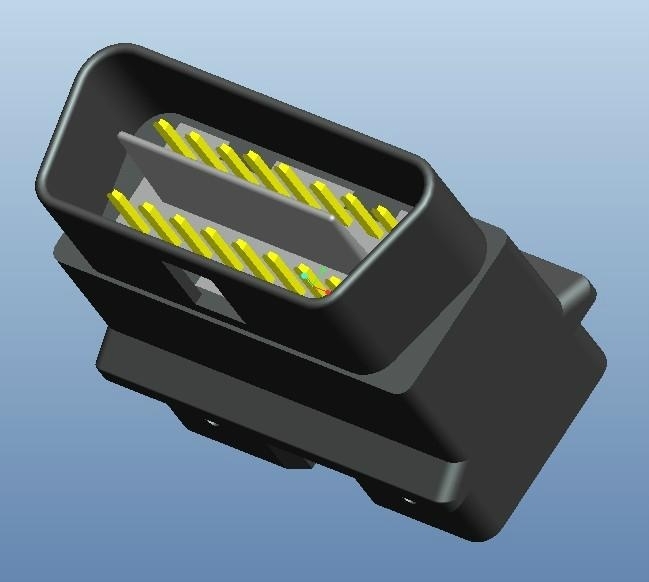OBD is the abbreviation of On-Board Diagnostic in English, and the Chinese translation is “On-Board Diagnostic System”.This system monitors the operating status of the engine and the working status of the exhaust gas after-treatment system at any time, and will immediately issue a warning if any situation that may cause excessive emissions is found. When the system breaks down, the malfunction light (MIL) or the check engine (Check Engine) warning light is on, and the OBD system will store the fault information in the memory, and the relevant information can be read in the form of fault codes through standard diagnostic instruments and diagnostic interfaces . According to the prompt of the fault code, the maintenance personnel can quickly and accurately determine the nature and location of the fault.
Features of OBDII:
1. The shape of the diagnostic seat of the unified vehicle is 16PIN.
2. It has the function of numerical analysis data transmission (DATA LINK CONNECTOR, referred to as DLC).
3. Unify the same fault codes and meanings of each vehicle type.
4. With driving recorder function.
5. It has the function of re-displaying the memory fault code.
6. It has the function of clearing the fault code directly by the instrument.
OBD devices monitor multiple systems and components, including engines, catalytic converters, particulate traps, oxygen sensors, emission control systems, fuel systems, EGR, and more.OBD is connected to the electronic control unit (ECU) through various emission-related component information, and the ECU has the function of detecting and analyzing emission-related faults. When an emission failure occurs, the ECU records the failure information and related codes, and issues a warning through the failure light to inform the driver. ECU guarantees the access and processing of fault information through standard data interface.
Post time: Feb-28-2023






